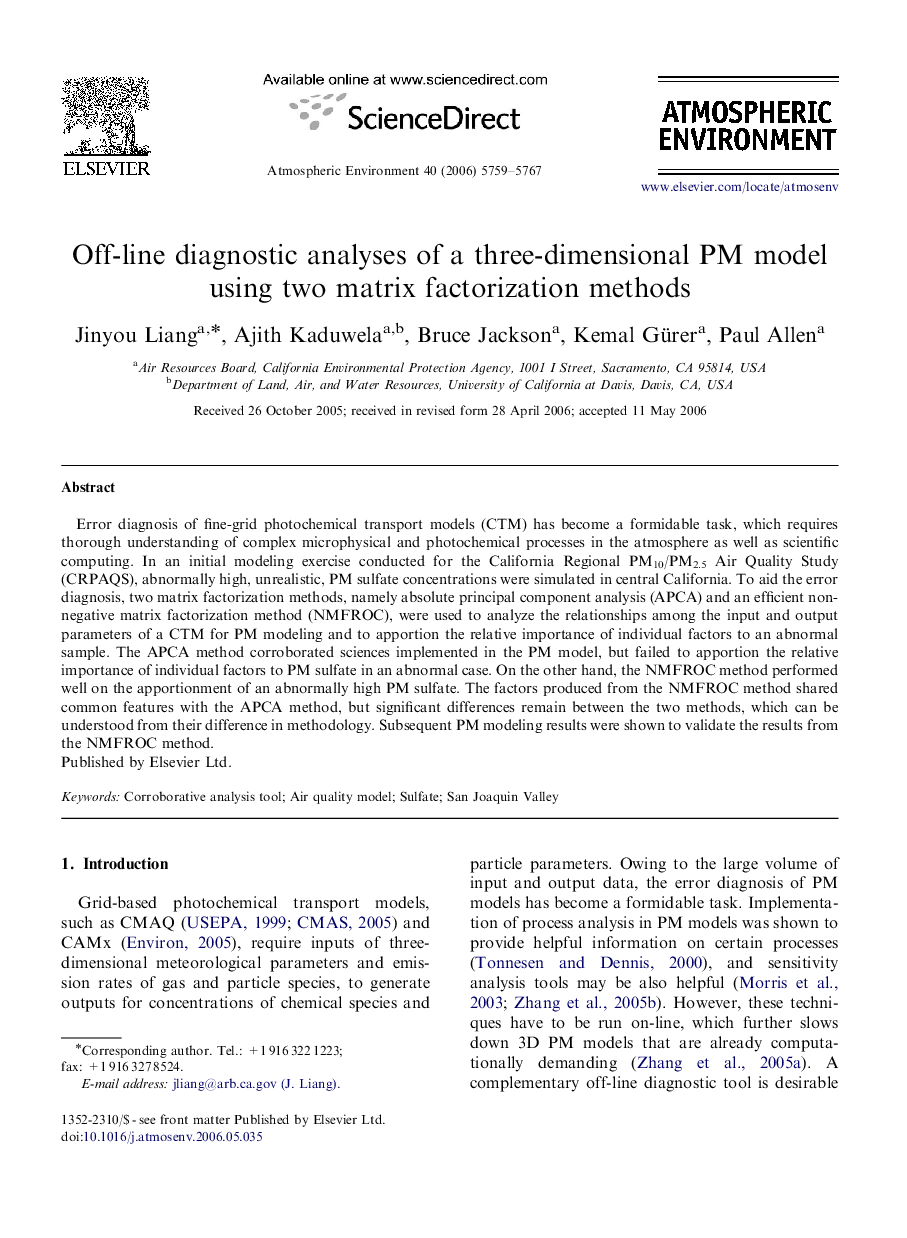| Article ID | Journal | Published Year | Pages | File Type |
|---|---|---|---|---|
| 4444270 | Atmospheric Environment | 2006 | 9 Pages |
Error diagnosis of fine-grid photochemical transport models (CTM) has become a formidable task, which requires thorough understanding of complex microphysical and photochemical processes in the atmosphere as well as scientific computing. In an initial modeling exercise conducted for the California Regional PM10/PM2.5 Air Quality Study (CRPAQS), abnormally high, unrealistic, PM sulfate concentrations were simulated in central California. To aid the error diagnosis, two matrix factorization methods, namely absolute principal component analysis (APCA) and an efficient non-negative matrix factorization method (NMFROC), were used to analyze the relationships among the input and output parameters of a CTM for PM modeling and to apportion the relative importance of individual factors to an abnormal sample. The APCA method corroborated sciences implemented in the PM model, but failed to apportion the relative importance of individual factors to PM sulfate in an abnormal case. On the other hand, the NMFROC method performed well on the apportionment of an abnormally high PM sulfate. The factors produced from the NMFROC method shared common features with the APCA method, but significant differences remain between the two methods, which can be understood from their difference in methodology. Subsequent PM modeling results were shown to validate the results from the NMFROC method.
